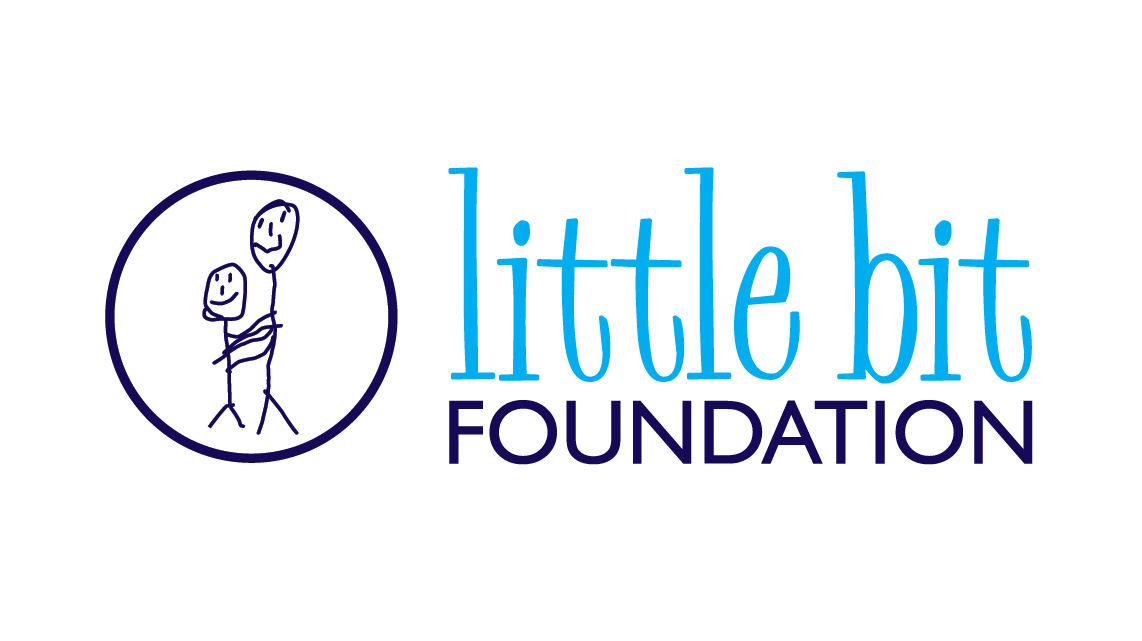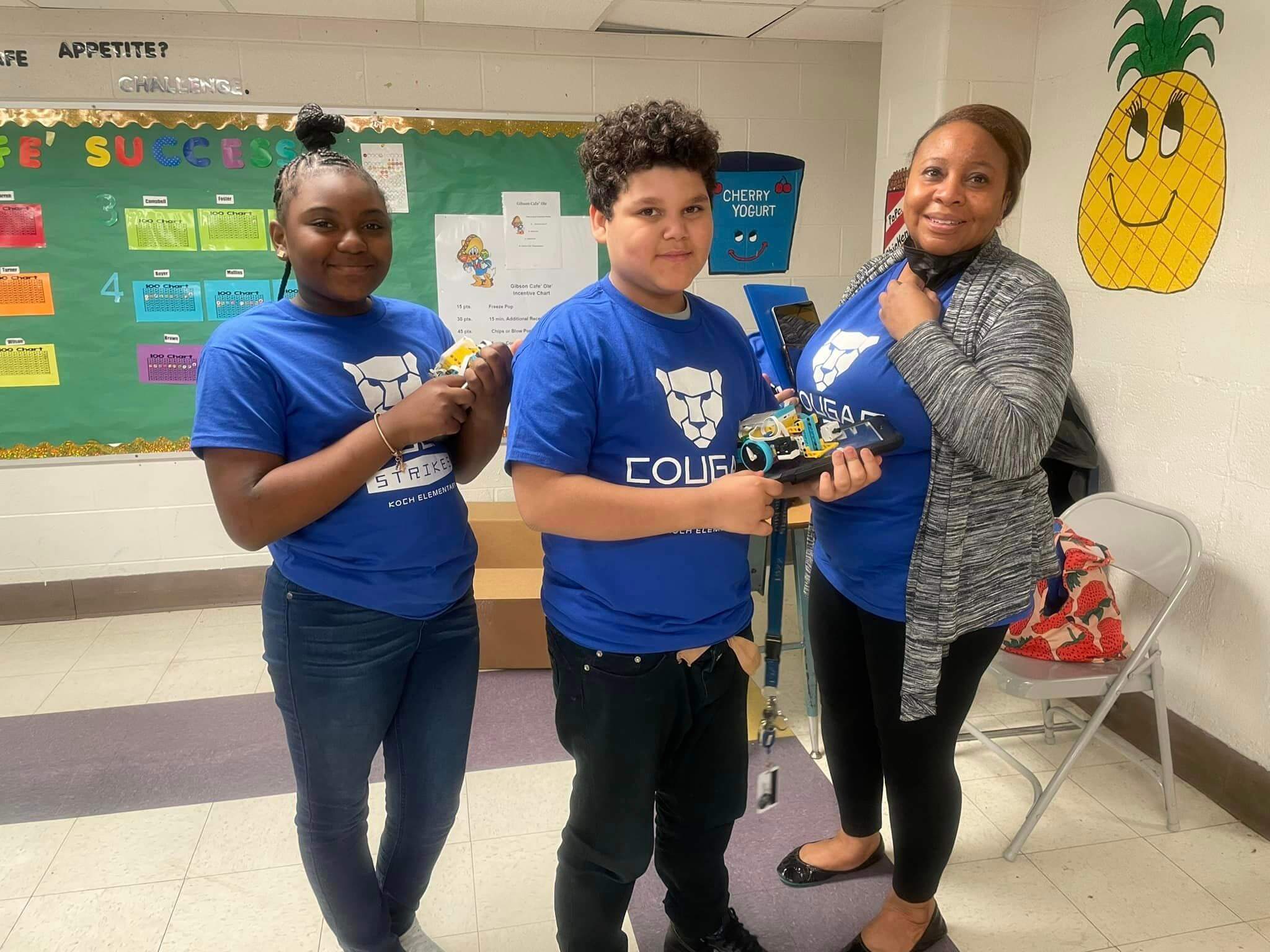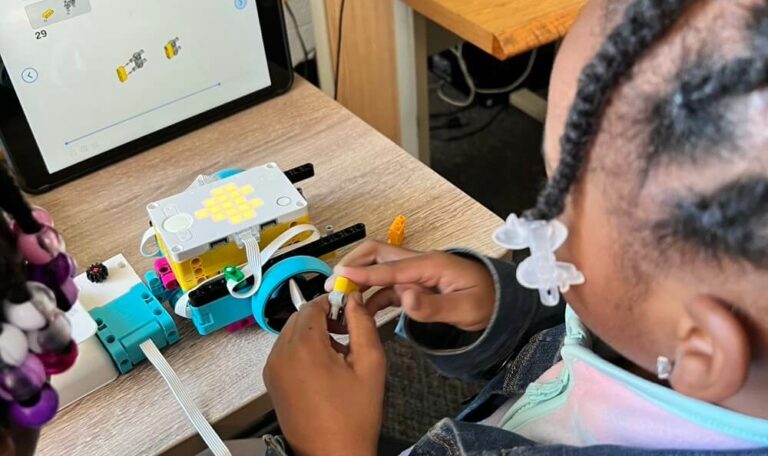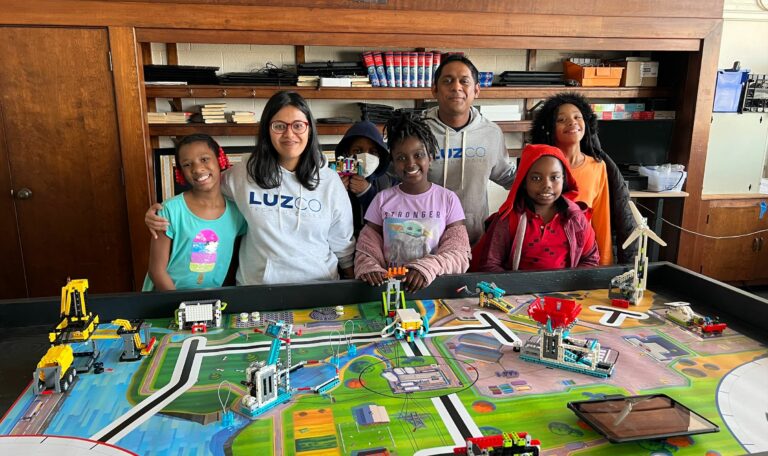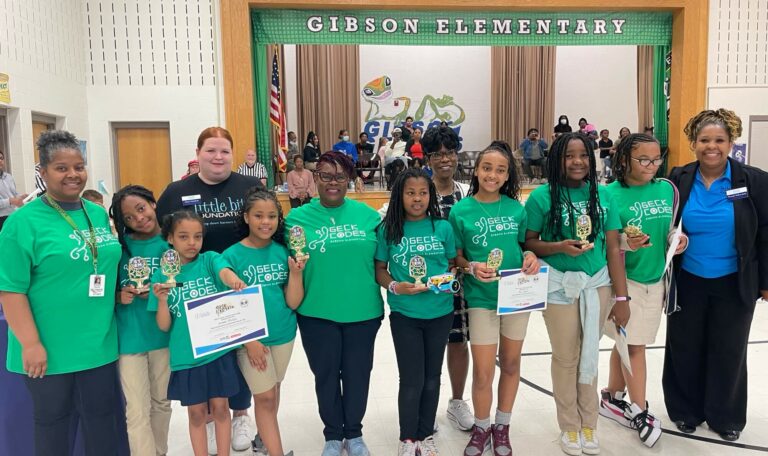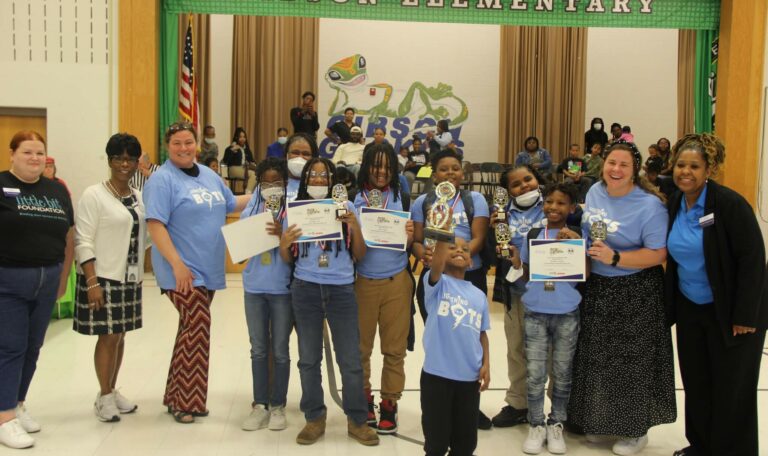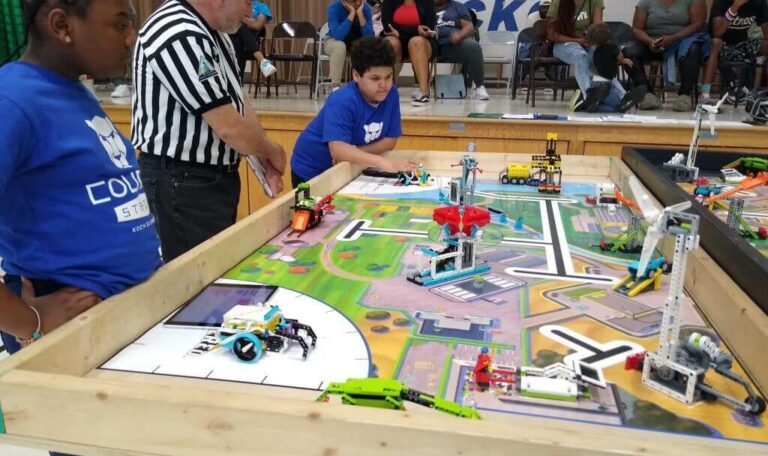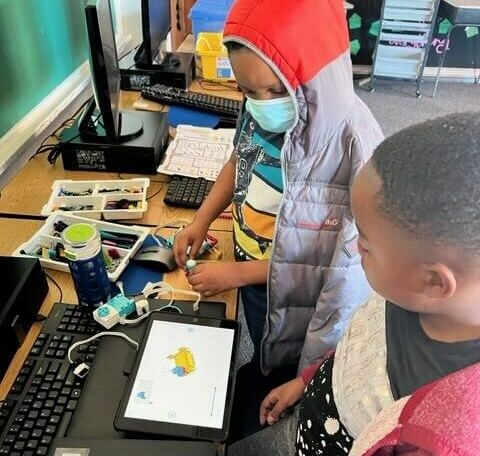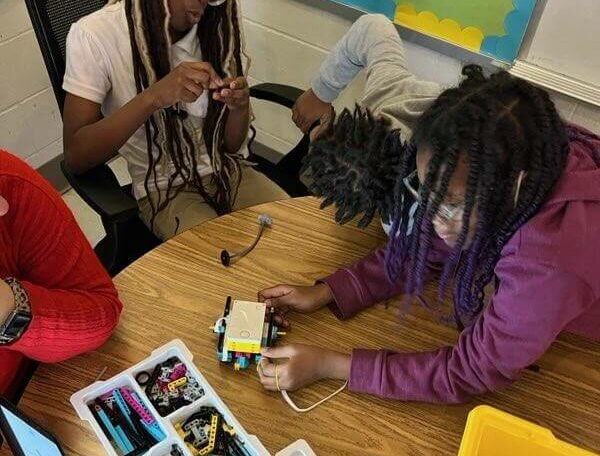STEM (Science, Technology, Engineering, Mathematics) is all around us. The smartphone that wakes us up and gives us the morning headlines. The weather forecast that helps us decide what to wear. The roadways we use to get to work or school, and the computer we use when we get there. Sarah Winkeljohn keeps STEM resources in her classroom for “brain breaks” throughout the day, because STEM education enables the next generation of innovators and “innovation is just fun,” she says.
The first-year teacher at Meadows Elementary was the co-coach of the school’s First Lego League team. In its second year participating in the program, Meadows is one of five schools in the Riverview Gardens School District where Little Bit was able to bring First Lego League, with partial funding from the Josh Seidel Memorial Foundation, Luzco Technologies and Stern Brothers. “It was such a great experience for the coaches and the students,” says Winkeljohn.
A project-based, hands-on, world-renowned program, First Lego League (FLL) introduces students to engineering and coding through an annual robotics challenge, in which students build robots from Legos and then program them to perform a series of “missions.” Essentially, students are learning block-based, or drag-and-drop coding, which gives them a foundation for learning real text coding.
Every year, FLL issues a new challenge theme; in the past, topics have included nanotechnology, climate and transportation. This year’s theme, “Super Powered,” focused on sources of energy, how we use it and the impact of our energy choices. Throughout the process of building and coding their robots, students were discussing the concept of energy conservation and learning about different innovations, such as wind turbines and solar farms, as well as the careers connected to energy.
The process started in October, but really ramped up in January when the students began connecting their robots to the iPad, says Winkeljohn. “In this phase, they’re deciding which missions they want to tackle and practice for competition,” she says. During competition, they have two minutes to complete as many missions as possible, with points awarded based on the difficulty of the tasks. “They didn’t shy away from the difficult missions.”
Still, there was a lot of trial and error and some frustration in the beginning, according to Winkeljohn. “It was really neat to watch how they worked together as a team to problem solve, calm each other down and persevere.” The Meadows team, which the students named the “Lightning Bots,” consisted of 10 4th and 5th graders – eight boys and two girls, who “quickly found their voice among the boys,” she says. Nearby Gibson Elementary’s FLL team was made up of all girls.
The season culminated in a district-wide competition, hosted at Gibson. Throughout the year, Little Bit was “right there for all of the teams, walking us through the program, helping us troubleshoot and then organizing the end-of-year competition. They gave us each such an amazing opportunity,” says Winkeljohn. As a sponsor for the Danforth team, Luzco, a woman-led boutique engineering firm, also came out on different occasions to work with the students.
For the competition, Little Bit arranged for official FLL judges to be present, and each of the five teams were judged on their two-minutes of missions, as well as a five-minute presentation on how they would improve energy consumption over the next 10-20 years. They also were evaluated on core values they displayed throughout the competition, such as good sportsmanship and collaboration. In the end, Meadows scored the most points with Gibson closely behind.
“They were so thrilled and proud; they wore their shirts and medals to school the next day,” says Winkeljohn. “The whole experience of 4th graders working with 5th graders, all of them working together to accomplish something, getting excited about STEM – several of them have signed up for STEM camps this summer – it was all amazing and I’m excited about next year.”
